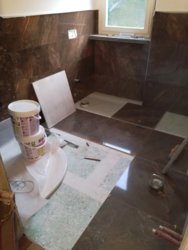I
Italy
The procedure was dictated by the heating plant company.
(German).
A 6 mm panel was used.
For thickness problems, I think it's ok even 10mm.
Epoxy adhesive, being only 6 square meters,
Kerakoll said that h40 no limits was ok,
But, to exaggerate, he said to use h40 extreme (epoxy adhesive)
(German).
A 6 mm panel was used.
For thickness problems, I think it's ok even 10mm.
Epoxy adhesive, being only 6 square meters,
Kerakoll said that h40 no limits was ok,
But, to exaggerate, he said to use h40 extreme (epoxy adhesive)



